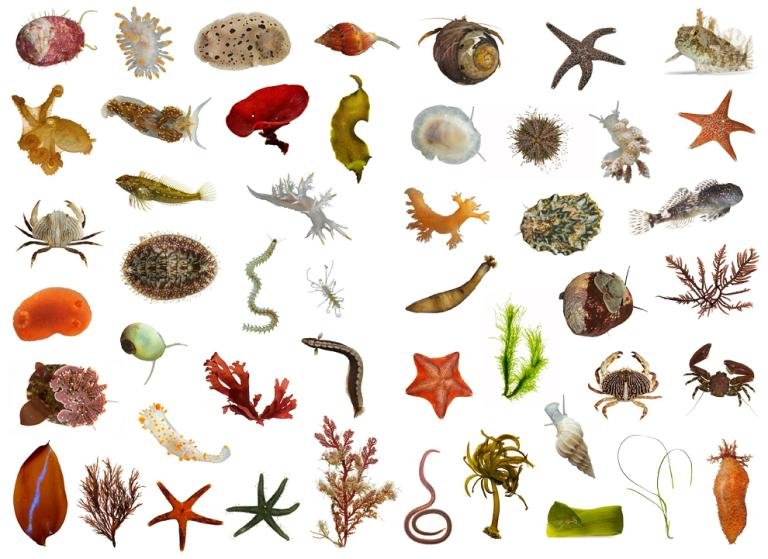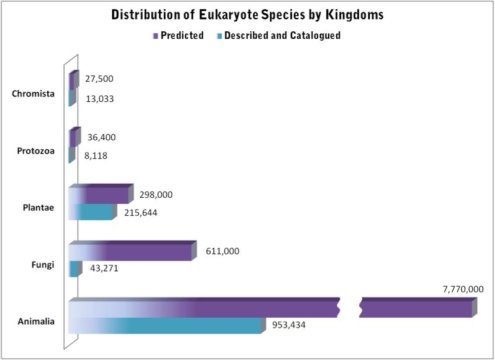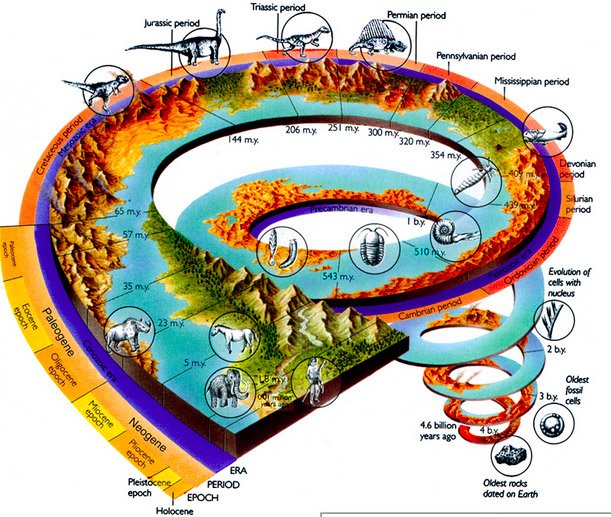Scientists have cataloged under 15% of current living species, meaning that about 86% of Earth's species have yet to be found and categorized.
More species come into and out of existence before we can find out they existed. We can't seem to catch up.

Species Collage
These are statistics that were calculated in 2011 and published in a study called "How Many Species Are There on Earth and in the Ocean?".
In 253 years of research into naming and describing species, started by Carl Linnaeus in 1758, there have been about 1.25 million species cataloged, with 1 million from the land and 250,000 from the ocean.
This study estimated there are 8.7 million species, with 6.5 million land species, 2.2 million ocean species, and extinction is accelerating for many. It's estimated the land species have 86% unknown, while oceanic species have 92%.
Prior to this study, the former estimations had a large margin of error, bing estimated at 3 to 100 million species on Earth. The new study has a margin of error of 1.3 million give or take.
And this study is not without it's criticism. Dan Bebber, an ecologist from the Earthwatch Institute, says the study used linear regression, which he says is the wrong technique for this type of data. He suggests the ordinal regression as a more accurate method of estimating the amount of species on earth.
Here are various methods of calculating the global number of species, and their limitations:

Calculation Methodologies
"This work deduces the most basic number needed to describe our living biosphere," says co-author Boris Worm of Dalhousie University.
When applied to all five known eukaryote kingdoms of life on Earth:

Species by Kingdom of Life
Total: 8.74 million eukaryote species on Earth.
- 7.77 million species of animals (953,434 described and cataloged)
- 298,000 species of plants (215,644 described and cataloged)
- 611,000 species of fungi (43,271 described and cataloged)
- 36,400 species of protozoa (8,118 described and cataloged)
- 27,500 species of chromista (13,033 described and cataloged)
Another co-author, Alastair Simpson, said "We have only begun to uncover the tremendous variety of life around us."
Are we ever going to catch up and find all the Pokemon, I mean species, on the Earth? Traditional approaches to describing species could require up to 1,200 years, with over 300,000 taxonomists, with an estimated cost of $364 billion. But new techniques like DNA barcoding are reducing the costs and time to identify each species.
I wonder if we will be able to?
We are at the top of the spiral, the tip of the spear, moving forward and evolving with all the other life around us.

Evolution of Life
Thank you for your time and attention! I appreciate the knowledge reaching more people. Take care. Peace.
References:
- 86 Percent of Earth's Species Still Unknown
- How Many Species Are There on Earth and in the Ocean?
- How Many Species? A Study Says 8.7 Million, but It’s Tricky
- How many species on Earth? About 8.7 million, new estimate says
If you appreciate and value the content, please consider:
@krnel
2016-12-20, 9am

